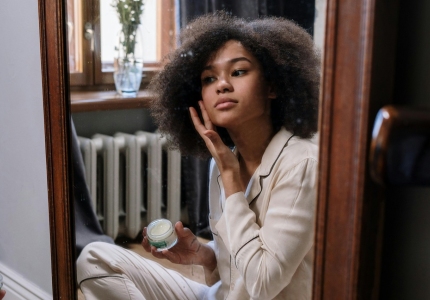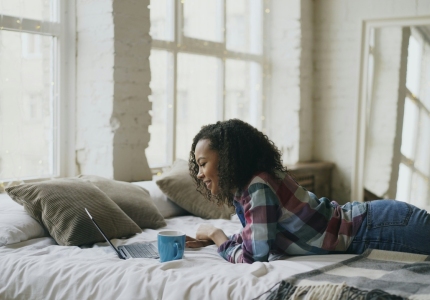Have you ever wondered where our modern-day makeup trends come from? They say there is nothing new under the sun and that adage proves true when you glimpse into the history of makeup. While some of the ancient makeup customs might seem downright strange to us, many have been carried over throughout the years.
Egypt
It is impossible for the words “ancient Egypt” not to conjure up images of exotic, almond-shaped eyes ringed with heavy eyeliner. As far back as 4000 BC, the Egyptians applied galena (or kohl), a black paint that protected the eyes from the sun, as eyeliner. In some ways, the look is reminiscent of the cat-eye eyeliner that is so popular nowadays. Cleopatra would approve.
The Egyptians also applied malachite powder, a green mineral, over the eyelids -- ancient-day eyeshadow. To create a lip/cheek stain similar to those popular today, they mixed red ochre with water. They weren’t so different from us after all.
Roman Empire
During the Roman Empire, the use of makeup was viewed as a sign of wealth and socioeconomic status. White skin denoted high socioeconomic class, so Roman women would apply chalk powder and white lead to whiten their skin. They also used natural skincare ingredients such as beeswax, honey, olive oil, rosewater and almond oil. With the recent push towards all-natural beauty treatments, these tried and true beauty products have made a reappearance in the modern skincare world. Sometimes there is no need to reinvent the wheel.
The use of kohl and malachite carried over from ancient Egypt to the Roman Empire. The Romans idealized large eyes and long eyelashes (don’t we all?). Interestingly, they also prized eyebrows that almost met in the middle, so they would apply soot to darken their eyebrows and extend them inwards. Today, we go to great lengths to avoid the unibrow look. Just goes to show that beauty is subjective and culturally conditioned.
The Middle Ages
The Middle Ages were somewhat dark times for the makeup world. In a society dominated by a strict church, makeup was often viewed as spiritually immoral, and applying makeup in any noticeable way was viewed as a direct defiance of church authority. But women faced a dilemma: they were expected to wear just the right amount of makeup to attract a husband.
They say necessity is the mother of invention. Women during the Middle Ages were forced to get creative in order to toe the line between two contradictory expectations, which made for some interesting beauty tactics. For example, women used roots and berries mixed with fats to make medieval lipstick, taking care to not go overboard with the color. Light rose shades were generally accepted, as long as the resulting look remained angelic. Come to think of it, Medieval Mauve sounds like it could turn into a best-selling lipstick color nowadays.
The Renaissance
In the Renaissance, we again see the pale-skin trend making an appearance. Women during the Renaissance period used powders made from white lead to lighten their skin and a bit of mercury to make the cheeks look just rosy enough. Although natural or tinted lip colors were still favored, Renaissance women had the freedom to ditch the pale-lip trend of the Middle Ages and embrace deep red lip colors, using vermillion to achieve those crimson shades.
The 19th century
During the 19th century, also known as the Victorian Era, the use of heavy makeup was seen as taboo and associated with prostitution, so women favored a natural look. Blush, often made of carmine, was the most popular cosmetic, as pink cheeks were considered healthy-looking. Rouge was also applied to give a splash of color to the lips. While soot was sometimes mixed with oil to create eyeliner or mascara, the resulting look was not very natural and, therefore, not very popular throughout the conservative 19th century.
The 20th century
The 20th century was a cosmetic rollercoaster, characterized by ebbs and flows in trends. The 1910s carried over the natural, bare-faced look of the 19th century, but the 1920s saw the appearance of the smoky-eye, glam look that remains popular today. The 1940s drifted back to the natural look, only to be supplanted by the winged eyeliner and bright red lipstick of the 1950s, a trend that has made a comeback today. The 1970s hippie movement again brought back the natural look, only to be replaced with the wild punk style of the 1980s, which, once again, quickly gave way to the fresh-faced look of the late 20th century.
Common Era
With the rise of beauty YouTube channels and Instagram accounts, our technology-oriented era feels just as volatile as (or even more so than) the 20th century, with rapidly changing beauty styles. Once thing is certain, though: many of our modern-day trends are not as modern as we think.
If you’ve enjoyed this articles, you should read Himalayan pink salt. Benefits for your skin.



